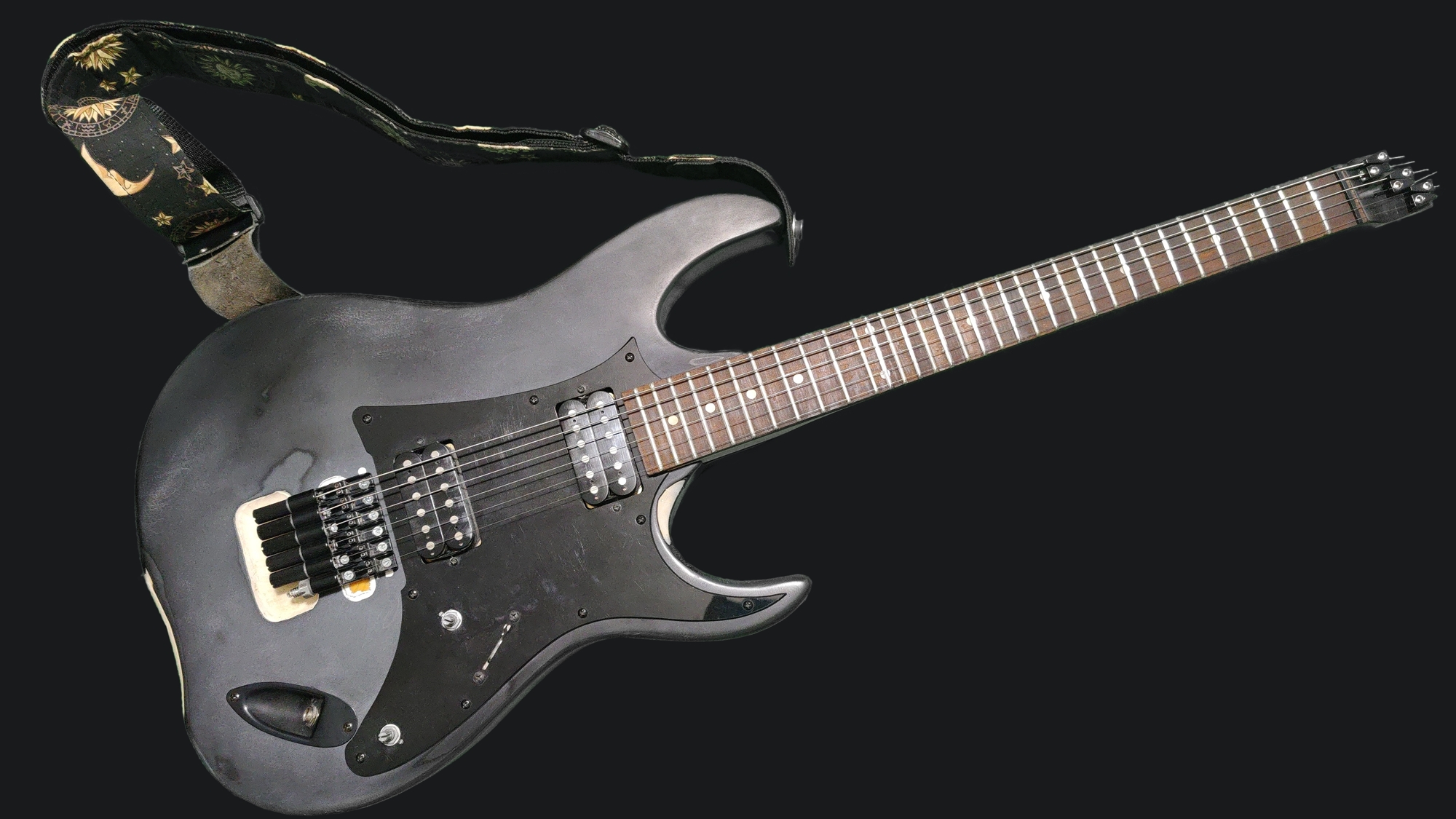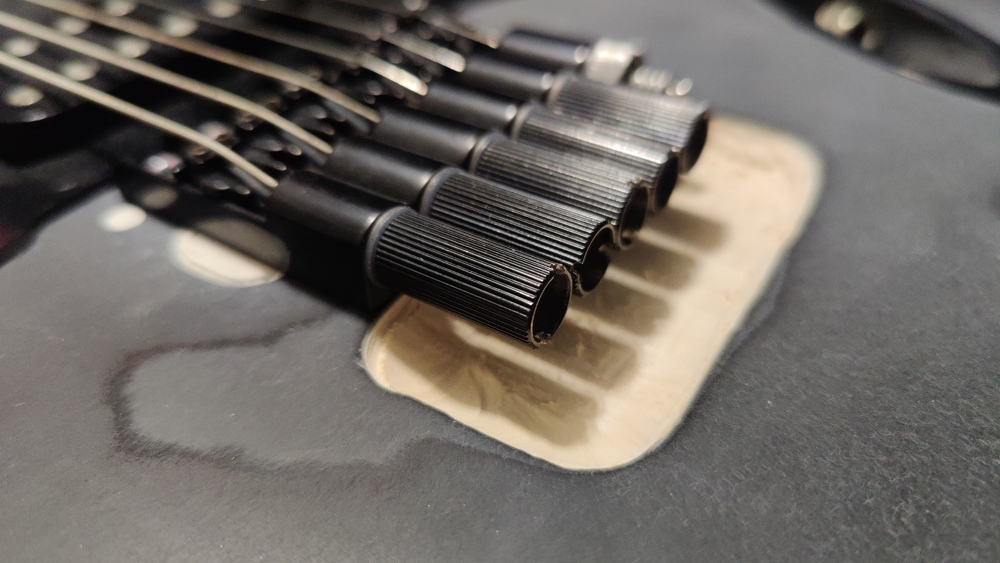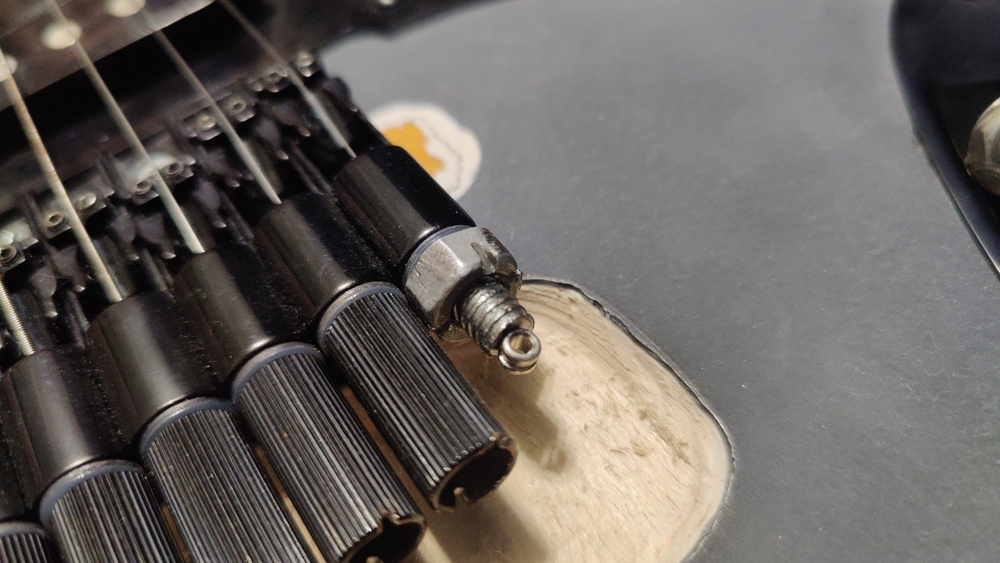
Converting a Guitar to Headless Hardware
Background
The widespread adoption of the six string, single scale length electric guitar bridge and matching headstock tuning machines is a lamentable state of affairs for all five of us who care, or indeed know that alternate options exist.
Alright, I'm clearly exaggerating a bit, but there really is something to be said regarding the absolute dominance of six string guitars in standard tuning sporting the same few bodies and hardware. You cannot go through a Guitar Center without tripping over a few hundred Stratocaster copies. Given how comfortable this configuration is to play, I suppose most people really do not need or want anything else. However, in the interest of learning slightly more involved guitar modification so that I might have the skills to make and adapt more demanding instruments, I've returned again to my cheap six string to test some affordable headless hardware.
In a headless configuration, the tuning machines are built into the bridge, which frees up most of the space on the headstock, as all it has to do is hold the ends of the strings in place. This results in an instrument that is shorter, lighter, and balanced more towards the body. This effect is negligible on typical instruments, but can provide a considerably more comfortable experience on guitars and basses with more strings and/or longer scale lengths.
Approach
My objective here is to convert my microtonal Ibanez 6 string electric guitar with standard hardware into a somewhat more conspicuous headless microtonal guitar.
This is achieved by removing the original single-piece tremolo bridge, cutting a piece of wood to fill the space where the tremolo mechanism was sunk, and keeping the new wood block in place using glue. The wood was cut and tested several times to where it would barely fit in the slot so that it could be held in under tension by friction alone, but I used the glue and two whole days to dry just to be safe. There do exist headless tremolo bridges, but I went with fixed single saddles because I felt like it. A bit of wood filler on top and some sanding, and it's good to go.
The other major modification is to remove the tuning machines and cut off most of the headstock. I am using single pieces of hardware for this as well, though I'd prefer if the kit came with one block. You will note that the string ends are held in place using grub screws. This is actually not nearly as failure-prone as it looks (indeed, those strings are held in quite well) and it makes it possible to use standard guitar strings (as opposed to specialty dual ball-end ones). Positioning and screwing in these head pieces is not too bad- if you're slightly off, the nut will correct the string path. I still try to run them straight for better tuning stability and string life.
By far the most difficult part of this conversion is drilling holes for mounting the new bridge pieces. This is particularly annoying when you're dealing with all single saddles, and the guitar body and plug in the bridge are both cheap wood. Although I did manage to shift all the strings about 1mm towards the treble side of the neck, the spacing between them is consistent and there are no fretting problems. It's not visible at all, but I did sand the bottoms of the saddles and ground them all. Tuning was very annoying even with the pocket I chiseled out, so I cut slots into the tuners and those make it 300% better to work with.


The difference in resonance is very apparent. Despite its weird junkyard look, the inexpensive headless hardware holds the strings in tune more effectively than the trem bridge, and it feels like it is delivering more vibrations into the body. This does not really have much impact on the sound as recorded by the pickups (indeed, the vast majority of factors that luthiers claim matter for guitar tone are completely irrelevant), but it does make the instrument more fun to play and "responsive feeling."
I made some other modifications for comfort that aren't related to the bridge hardware. Notably, I moved the input jack from the bottom edge of the body onto the top surface of it using a recessed jack. This is so much more comfortable for those who play in classical position whilst seated, as I do. This should be standard on most instruments. I also contoured the body a bit with a shinto rasp, and generally sanded over the finish and accepted the new look, as I was not going to bother polishing it back to glossy, nor would I care to.

One last note about this funny looking tuner. The internal brass threads that came cut onto the original cap for the bridge were so shallow that they could not catch. I cut up and drilled a steel bolt and nut using hand tools, and the resulting replacement is honestly the most solid piece of hardware on this bridge. I wish the QC was a bit better for these parts, but then again if we're onto wishing, I also wish that these sorts of bridges were standard.
Perhaps I'll attempt this mod on my six string fretless bass one day. That thing is hard to handle and I tested this mod here with the intention of later doing it on that instrument.
P.S.
I guessed the saddle positions while stringing up and the intonation was nearly perfect on the first try. I just had to move one saddle by about 1/4th of a note.
Nick